What Are the Benefits of PSYCHEDELICS
AND CONNECTION WITH GOD
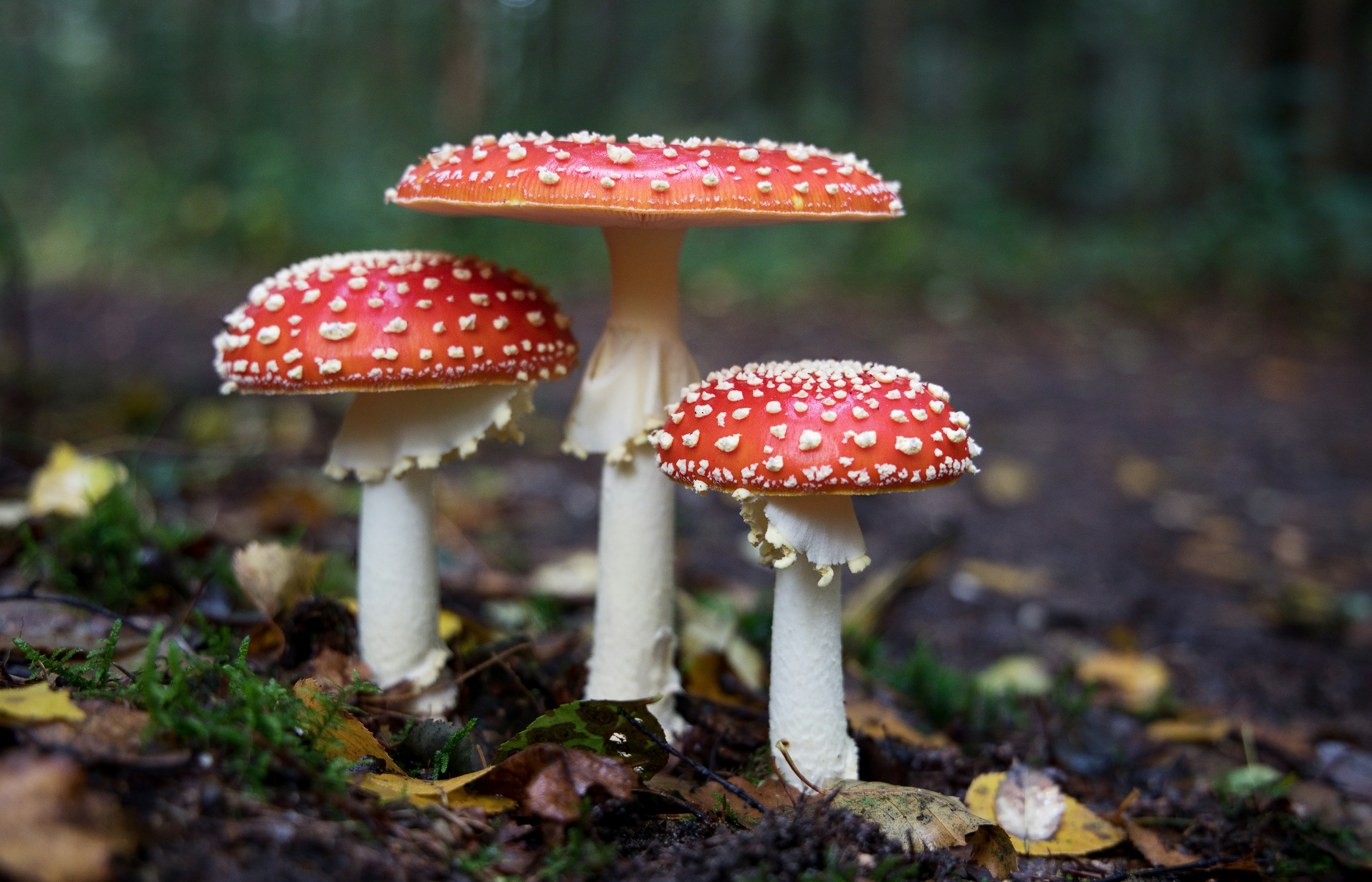
Microdosing Magic Mushroom
Psilocybin, Psilocybe
Magic mushrooms are the go-to choice for many when it comes to microdosing. They're simple to use, and there's extensive research backing their benefits and safety.
A typical microdose ranges between 0.2 and 0.5 grams (200 to 500 milligrams). You can eat it straight or as a chocolate.
To get started, weigh out your desired dose in raw, dried mushrooms or take it as a capsule. All you need to embark on your microdosing journey with shrooms is a small scale.
How it Feels:
Improved focus &
concentration Increased
creativity
Greater sense of empathy
Improved mood

Microdosing Ayahuasca
DMT, chachruna, caapi, yajé, yagé, la purga, daime
A sacred Amazonian brew, combines the ayahuasca vine (Banisteriopsis caapi) and a DMT source (often Psychotria viridis or Mimosa pudica), creating a profound psychedelic experience revered for its spiritual depth.
Ayahuasca not only targets serotonin but also inhibits monoamine oxidase (MAO), enhancing focus, concentration, and mood. The DMT in ayahuasca provides similar benefits to psilocybin or LSD, while the MAO inhibitor offers unique mood and concentration improvements.
Microdosing involves taking around 6 mg of DMT, but determining the exact dose requires advanced mass spectrometry to measure the brew's potency accurately.
How it Feels:
✓Improved sense of connectedness
✓A greater level of empathy towards others
✓More creativity & vision
✓Colors may appear more vibrant
✓More frequent flow-states

Microdosing MDMA
3,4-Methylenedioxymethamphetamine, commonly known as ecstasy, E, molly, or sassafras.
MDMA (Methylenedioxymethamphetamine) is an amphetamine-based stimulant that primarily affects serotonin receptors in the brain.
While it’s technically a psychedelic, its effects are distinct from other psychedelics like magic mushrooms and LSD.
Many users report that microdoses of MDMA enhance their sense of connection with others, improve mood, and help alleviate symptoms of PTSD, anxiety, and depression.
How it Feels:
✓Higher mental and
✓physical-energy-touch
✓ Better focus and Concentration ✓Elevated mood
✓Improved sense of empathy

Microdosing LSD
Lysergic Acid Diethylamide
LSD (lysergic acid diethylamide) is one of the most renowned psychedelics in the world, gaining fame in the 1960s through public figures like Timothy Leary, Ram Dass, and Dennis and Terence McKenna.
The usual microdose for LSD is between 8 and 12 micrograms.
A standard tab of acid contains between 60 and 100 micrograms each depending on the purity and potency.
Acid will degrade if stored incorrectly or for long periods of time.
In general, a microdose is about 1/8th of a tab of acid — so the easiest way to prepare microdoses is to cut a single tab into 8 pieces.
Using a razor blade, cut the tab into quarters, and then cut each quarter in half.
How it Feels:
✓Boost in energy and
✓focus
✓Increased clarity of thought
✓Lower appetite
✓Frequent flow-states

Microdosing Ketamine
Ketamine is an NMDA receptor antagonist, which means it inhibits certain neural pathways, leading to increased brain plasticity and altered neurotransmitter activity.
These changes are believed to contribute to ketamine's rapid-acting antidepressant effects. When taken in microdoses, ketamine can subtly modulate brain function, potentially enhancing mood, cognition, and emotional resilience.
A typical microdose of ketamine is around 5-10% of a therapeutic dose. This often translates to approximately 10-25 milligrams, depending on individual tolerance and desired effects. It is advisable to start at the lower end of this range and gradually increase the dose if needed.
How it Feels:
✓melting feeling into oneness
✓ enter altered states
✓ frequency transformation
Mood Enhancement:
Increased Creativity
Reduced Anxiety
Cognitive Flexibility
Pain Relief

Microdosing Kambo
Kambo, derived from the secretion of the Amazonian Giant Monkey Frog (Phyllomedusa bicolor), has been traditionally used by indigenous tribes for its purgative and healing properties. While Kambo is typically administered in a ceremonial setting in relatively high doses to induce a purging process, microdosing involves taking much smaller amounts to subtly influence the body and mind.
Kambo contains a complex cocktail of bioactive peptides that interact with the human body in various ways. These peptides, such as phyllokinin and dermorphin, can influence pain pathways, immune responses, and mood regulation.
Microdosing Kambo involves applying a minimal amount of the secretion to a small burn or blister on the skin, similar to a full-dose application but with significantly reduced quantities.
How it Feels:
Enhanced Immune Function
Improved Mood and Mental Clarity:
Detoxification Support
Increased Energy Levels
Pain Relief

Microdosing Cannabis
Marijuana, weed, herb, pot, grass, bud, ganja, Mary Jane
Cannabis isn’t psychedelic, but it does have psychoactive effects due to THC (tetrahydrocannabinol). THC works through a series of specialized receptors in the brain called endocannabinoid receptors. These receptors regulate a wide range of neurological functions ranging from appetite, pain transmission, mood, and more.
Taking low-doses of cannabis has been shown to offer many of the same benefits as regular doses, without the high. Additionally, low-dose THC has actually been shown to offer a greater level of benefit towards managing symptoms such as anxiety, sleep, and low-grade pain.
For microdosing, the standard range is between 2.5 and 5 mg of THC.
How it Feels:
✓Reduces the sensation
✓painLess feelings of nausea
✓A feeling of being relaxed & care-free
✓Improved focus & creativity
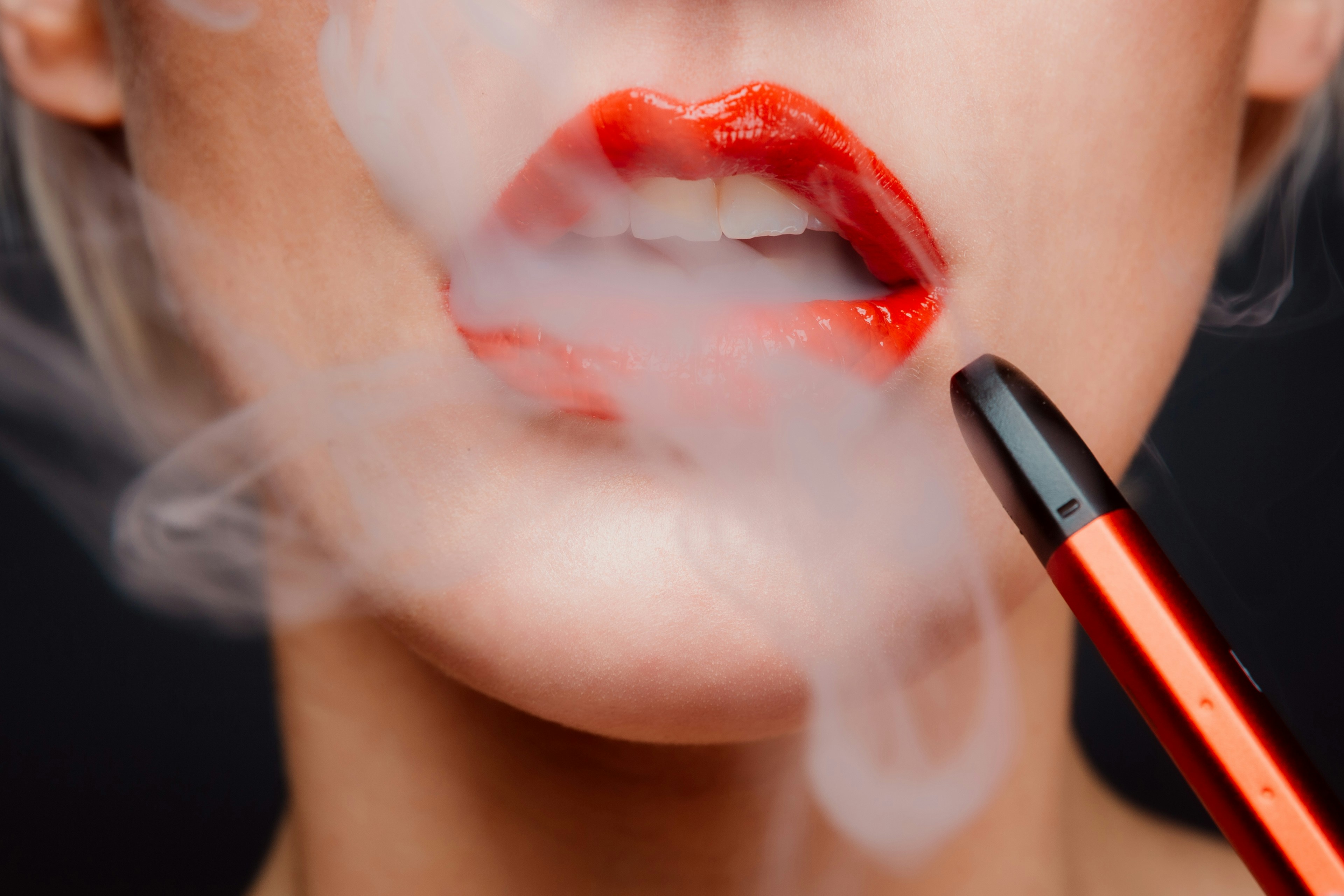
DMT PEN
DMT PEN
Microdosing DMT makes you airy.
Enhanced Creativity: Many users report increased creativity and innovative thinking, making it easier to solve problems and approach tasks from new perspectives.Improved Focus and Productivity:
Microdosing DMT may help boost concentration and productivity, allowing individuals to stay on task and complete their work more efficiently.
A Dmt pen is easy to use and carry around with you for instant benefits.
How it Feels:
✓regulate mood
✓sense of awareness and mindfulness
✓stay present and connected spiritual connection
✓enhanced introspective experiences
✓heightened empathy
✓improved interpersonal relationships
What Are the Benefits of PSYCHEDELICS
Psychedelics have been explored for their therapeutic potential across various conditions. Here are the most common:
Alcoholism- Psilocybin and LSD have been studied for promoting abstinence.
Depression- psilocybin and ketamine have been seen as antidepressant effects.
Anxiety Disorders: MDMA and psilocybin potential to reduce symptoms of anxiety.
Post-Traumatic Stress Disorder (PTSD): MDMA-assisted therapy has shown promise.
Addiction: ibogaine and psilocybin have been investigated for their potential.
Smoking: Psychedelics have shown potential to aid in smoking cessation.
Obsessive-Compulsive Disorder (OCD): psilocybin and MDMA help alleviate symptoms.
Headaches: LSD and psilocybin reduce the frequency and intensity of headaches.
Chronic Pain: Psychedelics may help manage chronic pain conditions
End-of-Life Anxiety: Psilocybin-assisted therapy has been explored to help terminally ill patients cope with anxiety and existential distress.
Cognitive Enhancement: Microdosing psychedelics is believed to enhance cognitive function, creativity, and problem-solving abilities.
Eating Disorders: Psychedelics are being explored for their effects on body image.
Fear and Phobias: MDMA and psilocybin help individuals confront and overcome fears and phobias.
Neuroplasticity: Psychedelics aid in brain repair and recovery .
Insomnia: Some psychedelics improve sleep patterns and alleviate insomnia.
Spiritual Growth: Many report profound spiritual experiences and personal growth.
Stress Reduction: Psychedelics may help reduce stress and improve stress resilience.
Psychedelics & GOD
I believe in God and embrace the guidance of the Holy Spirit in my life. Psychedelics have played a crucial role in deepening my spiritual connection and healing journey. Through these experiences, I have felt a profound sense of divine presence, clarity, and inner peace, which have brought me closer to God. They have helped me understand that faith and psychedelic healing can coexist, providing a path to greater self-awareness and spiritual growth.
—— Favorite Bible quotes about manifestation
1. Mark 11:24 (NIV) - "Therefore I tell you, whatever you ask for in prayer, believe that you have received it, and it will be yours."
2. Matthew 7:7-8 (NIV) - "Ask and it will be given to you; seek and you will find; knock and the door will be opened to you. For everyone who asks receives; the one who seeks finds; and to the one who knocks, the door will be opened."
3. Romans 4:17 (NIV) - "...the God who gives life to the dead and calls into being things that were not."
4. Hebrews 11:1 (NIV)
- "Now faith is confidence in what we hope for and assurance about what we do not see."
5. Proverbs 23:7 (KJV) - "For as he thinketh in his heart, so is he."
Working Higher, Not Harder:
1. Matthew 6:33 (NIV) - "But seek first his kingdom and his righteousness, and all these things will be given to you as well."
2. Philippians 4:13 (NIV)
- "I can do all this through him who gives me strength."
3. Proverbs 16:3 (NIV)
- "Commit to the Lord whatever you do, and he will establish your plans."
4. Isaiah 40:31 (NIV)
- "But those who hope in the Lord will renew their strength. They will soar on wings like eagles; they will run and not grow weary, they will walk and not be faint."
5. Psalm 46:10 (NIV)
- "He says, ‘Be still, and know that I am God; I will be exalted among the nations, I will be exalted in the earth.’"
What Are the Benefits of MICRODOSING
What Are the Benefits of Microdosing?
The science of microdosing is still in its infancy.
The bottom line is that we simply don’t have enough long-term data to make any definitive claims about what we can expect to gain from using microdoses. Most of the evidence we have at the moment come from anecdotal reports and survey-based studies.
However, there are several high-level studies in the works as we speak exploring the short and long-term benefits of microdosing psychedelics. Companies like MindMed are leading the way with this research. One of their studies on the effects of microdosing LSD for ADHD recently entered phase II of clinical testing.
With that aside, here are the main benefits commonly attributed to microdosing:
Increased productivity
Greater access to flow states
More creativity & curiosity
Higher sense of empathy & communication
Improved focus & concentration
More self-efficacy
Better emotional wellbeing & connection
More energy & coordination
Greater sense of self-awareness
May reduce addictive behaviors
May support cluster headaches
Offers protective action on the brain & neurological system
Reduced anxiety levels
Better rational awareness & problem solving
Results from an online survey were published in Harm Reduction Journal, quantifying the benefits of microdosing either LSD or psilocybin. The final analysis included the data of 278 individuals who self-reported the benefits they experienced, as well as a rating of subjective importance of the experience on a scale of 0–100.
Here’s what the study discovered:
The main benefits reported included improvements in mood (27% of responders), improved focus (15% of responders), more creativity (13% of responders), and a higher level of self-efficiency (11% of responders).
INSIGHTFUL VIDEOS
BENDING ENERGY
DMT BREATH-WORK + TRIGGER POINT RELEASE
What is Microdosing?
A microdose is a very low dose of a psychoactive substance —
most commonly LSD or magic mushrooms.
The dose is too low to make users feel high — but it still has an impact on the brain. Microdoses are used a lot like nootropics to increase productivity, support the creative process, and help people feel more empathetic towards others.
Each substance has a different set of effects on the mind and body — even in lower doses.
Most people who microdose take about 10% of the standard psychoactive dose and use them over long periods of time rather than just once. The most common schedule is to take a dose every third day for about 6–8 weeks.
Microdosing is the practice of taking very small doses of a psychoactive substance — usually LSD or magic mushrooms. The dose is too small for it to produce any perceptual changes.
In other words — microdosing won’t make you high.
This comes in contrast to a conventional macro dose — which is a large dose with the goal of producing a psychedelic experience.
Microdoses aren’t used to induce hallucinations or a spiritual experience. Instead, the goal is to improve creativity, boost professional performance, increase concentration, and support deeper and longer-lasting flow-states.
How Much Do I take?
By definition, a microdose is very small. The dose depends on the substance being used, as well as your individual size and weight.
In most cases, a microdose is around 10% of the standard psychoactive dose — or less.
Here are the typical microdoses for various substances:
Magic mushrooms — 200 mg (0.2 grams)
LSD — 8–12 micrograms
Ayahuasca — Variable Dose (6 mg Equivalent)
MDMA — 5–10 mg
Mescaline — 10–40 mg
Marijuana — 2.5–5 mg THC
Ibogaine — Variable Dose (10%)
For a more specific calculation based on your individual weight and experience level, use the calculator below.
Setting a Microdosing Schedule (Timing)
Microdosing works best when done consistently over several weeks or months. When first starting out, there are three aspects of timing to consider:
What time of the day should you take your dose?
How many days should you microdose per week?
How long should you continue to microdose?
A) What Time Of The Day Should I Take A Microdose?
Even in small doses, psychedelics have a mildly stimulating effect. This means if you take them too late in the day they can interrupt your ability to fall asleep.
Most people take their microdose in the morning to prevent this.
Keep in mind, most psychedelics wear off after about 6 hours, so you’ll want to time the dose so it gives you the desired benefits when you have the most to gain from it. This depends on what intentions you set in the previous step.
For example, if you want to be more productive at work, you’ll want to take the microdose right before you start work for the day. If you don’t usually start working until late morning, it doesn’t make a lot of sense to take your dose at 6 am.
If your goal is to improve creativity and you do most of your creative work in the late afternoon or early evening, you may want to take your dose closer to lunch time so the effects overlap with your creative activities.
In general, you should avoid taking your microdose at least 8 hours before your regular bedtime. If you notice you’re having a hard time sleeping on the days you take the dose, you may need to adjust and take the dose even earlier.
B) How Many Days A Week Should I Take A Microdose?
Microdoses shouldn’t be taken every single day. Just like exercising, it’s important to take rest days.
There are a few philosophies for scheduling when it comes to microdosing:
Dr. Fadiman Standard Microdose Schedule — Dose on day 1, no dose day 2 & 3, repeat
Psychedelic work week — 5 days microdosing, 2 days off, repeat
Alternating weeks — 1 week with dose, 1 week no dose, repeat
There’s a lot of debate in the microdosing community about what the best schedule is. In truth, there’s really no “right” or “wrong” way to do it. What matters is how it feels for you. Everybody is different and will respond in kind.
If you find taking the dose for an entire workweek is too much, add an extra rest day or two, or reduce the dose. These schedules are merely guidelines — it’s up to you to tailor the experience so it works for you.
My favorite schedule is the standard set by Dr. James Fadiman (1 day on, 2 days off). He set this schedule to standardize the process of microdosing in order to collect more consistent data.
Even when the substance wears off, there’s some residual effect. I find that after about 2 weeks of microdosing, I continue to feel the same benefits even on the rest days.
C) How Long Should I Continue To Microdose For?
When combined with goal-setting and intention, the effects of a microdose become stronger over long periods of time. It’s best to look at the improvements of microdosing as a long-term, gradual gain. It takes at least 2 weeks to develop new habits and it can be even longer before you’re able to get into productive flow states on command.
With that said, it’s important to take some breaks from microdosing as well.
Most people will microdose for 6 to 8 weeks consistently, followed by a break of about a month or two.
Set Goals & Intention Before You Start (Intention)
The whole point of microdosing (for most people) is self-optimization. The motivation to use these substances depends on your individual situation. Whether that’s to help you live more presently, perform better at work or school, or to assist you with your creative endeavors is up to you.
Setting a few goals or intentions before you begin can make a big difference in seeing these improvements manifest. It doesn’t need to be too involved if you don’t want it to be. Even just taking a mental note of the kind of things you want to gain from your microdosing regimen is enough.
However, if you want to be more involved and take a proactive approach in your self-growth and discovery — there are plenty of ways to do that.
This practice is all about personal growth. Microdoses are merely a tool to help us dig deeper, cast a wider net, and accomplish more on a daily, weekly, and monthly basis.
It’s also a great way to develop and solidify new habits and routines into your life.
The best way to track your progress and goals while you microdose is to use bullet journaling methods — either on a note-taking app or in a physical notebook.
Here are some of the ways people are optimizing their growth while microdosing:
A) Journaling & Goal Setting
Before you even begin, write down your goals for microdosing in the first place. This will help keep the idea on the top of mind as you go through the process. You can write down as many goals as you want, but it’s best to keep it to 1 main goal, and 2 or 3 smaller goals.
A few goals you may want to consider:
Become proficient in a skill
Finish writing that book or blog series
Be able to sit and meditate for 1 hour everyday
Finish building that app or program
Get an A in your studies
Establish a new habit or routine
Wake up at 5am every morning
Write 6000 words everyday (yes, it’s totally possible)
It also helps to keep a journal each day to help track your progress. Again, this can be as simple or as involved as you’d like. Some people prefer to use free-form journaling, other’s like a prompt-style journal method.
This is separate from the goals you set above. Your daily journal is used to track how you’re feeling, and how you’re progressing towards those goals. You can add as many prompts as you want here, but I’ve found it’s better to keep it short or you simply won’t fill them out everyday.
For a really basic template, try using the following prompts:
Rate your mood from 1 (not good) to 10 (feeling great!)
Rate your stress levels from 1 (super-chill) to 10 (high-stress)
Describe how you’re feeling today
If you could only accomplish one thing today, what would it be?
B) Establish Healthy Habits & Routines
Starting a micro dosing regimen is an excellent time to dial in your ideal habits and routines.
Have you been meaning to wake up earlier in the mornings? Exercise or meditate more often? Drink less coffee?
Making positive changes and developing habits to improve your life and optimize towards the goals you set can dramatically increase your chances of success.
Here are some of the most common lifestyle habits and changes to consider that can increase the impact of microdosing:
Daily exercise — aim for at least 15 minutes of high-intensity or 45 minutes low-intensity per day (more is great too!)
Dietary changes — try a structured diet like the ketogenic diet, or simply cut-out sugary and processed foods
Sleep hygiene — go to bed at the same time every night and take measures to prepare yourself for sleep
Meditation or yoga — even 10 minutes per day can have a profound impact on stress and focus
Learn a new skill — microdosing is excellent for assisting learning, why not take the time to add some new knowledge along the way?
Is Microdosing Dangerous?
The most prominent researcher in the field of microdosing psychoactive substances is Dr. James Fadiman. He’s spent decades exploring the short and long-term benefits and safety of microdosing various substances.
When it comes to classical psychedelics, including psilocybin (magic mushrooms), LSD (acid), mescaline, and DMT
— Fadiman is adamant that these substances are very safe.
Albert Hoffmann, Ph.D. —
the man who invented LSD — took microdoses of the substance for most of the later years of his life. He lived to the ripe old age of 102.
Countless others have used, or continue to use low-dose LSD, psilocybin, and mescaline on a consistent basis
with no signs of issue that can be linked to the psychedelic itself.
There is little to no evidence that microdosing is dangerous.
With that said, there are some theoretical issues with taking even small doses of certain compounds over long periods of time — such as MDMA.
Potential Side-Effects of Microdosing
There are a few side-effects to microdosing as well. Some of these side-effects are contradictory to the suggested “benefits” of the practice.
Everybody reacts differently — one person may find microdosing effectively eliminates their anxiety, while another may experience even higher feelings of anxiety as a result.
The biggest risk to using psychedelics, by far, is accidentally macrodosing (taking a psychoactive dose). This is why it’s important to take the time to understand the correct dose of any substance you’re using and start with a dose that’s much lower than you think you need for the very first session.
Once you get a feel for how the substance affects your body individually, you can tweak the dose to optimize its effects.
Here are the potential side-effects of microdosing:
Disruptions in sensory information (sight, sound, & touch)
Changes in temperature regulation (feeling hot or cold)
Numbing or tingling in the limbs & fingers
Digestive system discomfort
Reduced appetite
Headaches
Increased anxiety
Imparied focus & distraction
Lower energy levels (especially common later on in the day)
Irritability, discontent, & sadness
Social interference, awkwardness, & difficulties expressing oneself
Confusion & disorientation
What Happens If I Take Too Much of a Microdose?
Taking too much of a microdose is the most common problem with microdosing.
When this happens, you’ll experience the psychoactive effects of the substance itself — much like taking a smaller macrodose.
Depending on how much you took, you may feel high and may become unfit to drive or to work.
It’s important to know your dose, know about the substance you’re using, and to start with a conservative dose for the first session. Once you’ve gotten a better understanding of how the substance works you can work on tweaking the dose for optimum effects.
Is Microdosing Legal?
Most psychedelic substances are illegal.
It’s more than likely that microdoses are illegal where you live.
The exception may be marijuana or THC if you live in a legal state, or countries like Canada where marijuana is legal for anybody above the legal age limit.
CONDISER SHARING YOUR STORY
Let’s face it, if you have worked with psychedelics for any extended amount of time, you know that the journey never really ends. The next stage in consciousness exploration is always just around the corner. For many experienced travelers, personal transformation simply morphs into a larger desire to serve the community.
We want to hear from you! Do you have a story of personal transformation with psychedelics? Consider sharing it with us.
Are you ready to take the next step and go deeper with psychedelics? Find the perfect psychedelic retreat in our directory, where you can read first-hand reviews and testimonials from the psychedelic community.
No matter how experienced you are, psychedelics are still hard work. Are you wrestling with a particularly challenging ceremony and need some integration tips? Check out
Guide to a rewarding psychedelic integration.
Interested in participating in psychedelic therapy or possibly giving back to the community by becoming a psychedelic therapist? Read more about what
psychedelic therapyis and where to find it. You can also check out the guide to
becoming a psychedelic therapist. Curious about the latest scientific breakthroughs and what’s happening in psychedelic research? Find out more about currentpsychedelic research publications
and trends.Important Inquiry
How familiar are you with altered states of consciousness?
Have you had past experiences with drugs that were scary, dangerous, or bad?
Are you expecting psychedelic therapy to provide an ‘instant cure’?
What other types of treatment have you considered or tried before?
Are you taking any prescribed or recreational drugs that could interfere?
Is psychedelic therapy even an option for you where you live?
If you had a negative experience or ‘bad trip’ would you still think it was worth it?
Your Paragraph text goes Lorem ipsum dolor sit amet, consectetur adipisicing elit. Autem dolore, alias, numquam enim ab voluptate id quam harum ducimus cupiditate similique quisquam et deserunt, recusandae. here
what is psychedelic Integration
Psychedelic integration is the process of making sense of and incorporating the experiences and insights gained from psychedelic journeys into one's daily life. This can involve reflecting on the personal, emotional, and spiritual revelations encountered during the psychedelic experience and finding ways to apply these insights to foster personal growth, healing, and transformation.
Key Aspects of Psychedic Integration
Reflection and Understanding : Taking time to reflect on the experiences and understanding their deeper meanings.
Emotional Processing : Working through any challenging emotions or traumatic memories that surfaced during the experience.
Behavioral Changes: Implementing changes in behavior or lifestyle that align with the new insights and awareness.
Creative Expression: Using art, writing, music, or other creative outlets to express and process the experience.
Spiritual Practice: Integrating the spiritual insights gained into one's spiritual practice or worldview.
Community and Support : Sharing experiences with a supportive community or seeking guidance from therapists or integration specialists.
Benefits of Psychedelic Enhanced Personal Growth : Helps to solidify the insights gained during the psychedelic experience, leading to lasting personal development.
Improved Mental Health: Facilitates the healing of past traumas and the resolution of emotional issues, contributing to better mental health.
Increased Self-Awareness: Encourages a deeper understanding of oneself and one's patterns of behavior, thoughts, and emotions.
Spiritual Development: Supports spiritual growth and the integration of profound spiritual experiences into everyday life.
Behavioral Change: Promotes positive changes in habits, relationships, and lifestyle choices.
Greater Resilience : Builds emotional resilience and the ability to navigate life's challenges with greater ease.
Example of Psychedelic Integration: Writing a Book
One powerful way to integrate a psychedelic experience is through the process of writing a book. Here’s an example of how this can be done:
My Journey with Writing a Book
During my psychedelic journey, I encountered profound insights about my life's purpose, my creative potential, and the unresolved emotional wounds that had been holding me back. I felt a deep connection to my inner self and a newfound clarity about my path forward.
Reflection and Understanding: After the experience, I spent time reflecting on the vivid visions and emotions that had surfaced. I journaled extensively, capturing the raw details and the meanings I derived from them.
Emotional Processing :
I allowed myself to feel and process the emotions that arose, seeking support from a therapist to work through any particularly challenging feelings. This helped me gain a deeper understanding of my emotional landscape and how it influenced my behavior.Creative Expression:
Inspired by the insights gained, I decided to write a book. This creative endeavor became a way to channel the energy and revelations from my psychedelic journey into something tangible. Writing allowed me to explore and express my inner world in a structured and meaningful way.Behavioral Changes:
The process of writing the book led to significant changes in my daily life. I became more disciplined, dedicating time each day to writing and reflecting. I also adopted healthier habits that supported my creative process, such as regular exercise, meditation, and a balanced diet.Spiritual Practice:
Writing the book became a spiritual practice in itself. It allowed me to integrate the spiritual insights from my psychedelic experience into a cohesive narrative that not only transformed my understanding of myself but also aimed to inspire and help others on their journeys.Community and Support:
I joined a community of writers and psychedelic explorers who provided support, feedback, and encouragement. Sharing my experiences with them and receiving their insights enriched my understanding and fueled my motivation to complete the book.Conclusion
Psychedelic integration is a crucial process for making the most out of psychedelic experiences. By reflecting on insights, processing emotions, and implementing changes, individuals can foster personal growth, healing, and transformation. Writing a book is just one example of how to creatively and meaningfully integrate these profound experiences into everyday life.
v i d e o. t e s t i m o n i a l s
SUCCESS STORIES
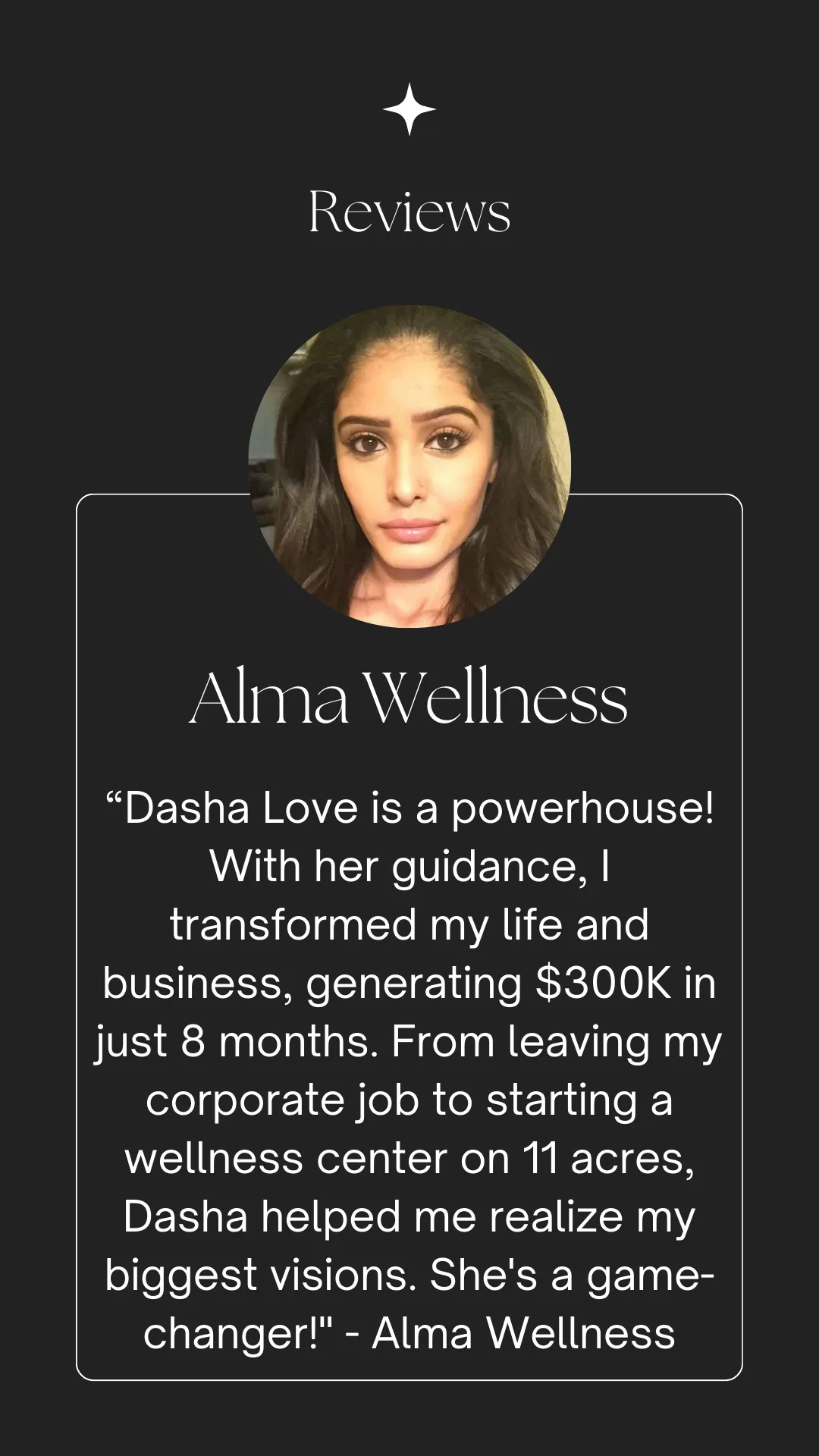
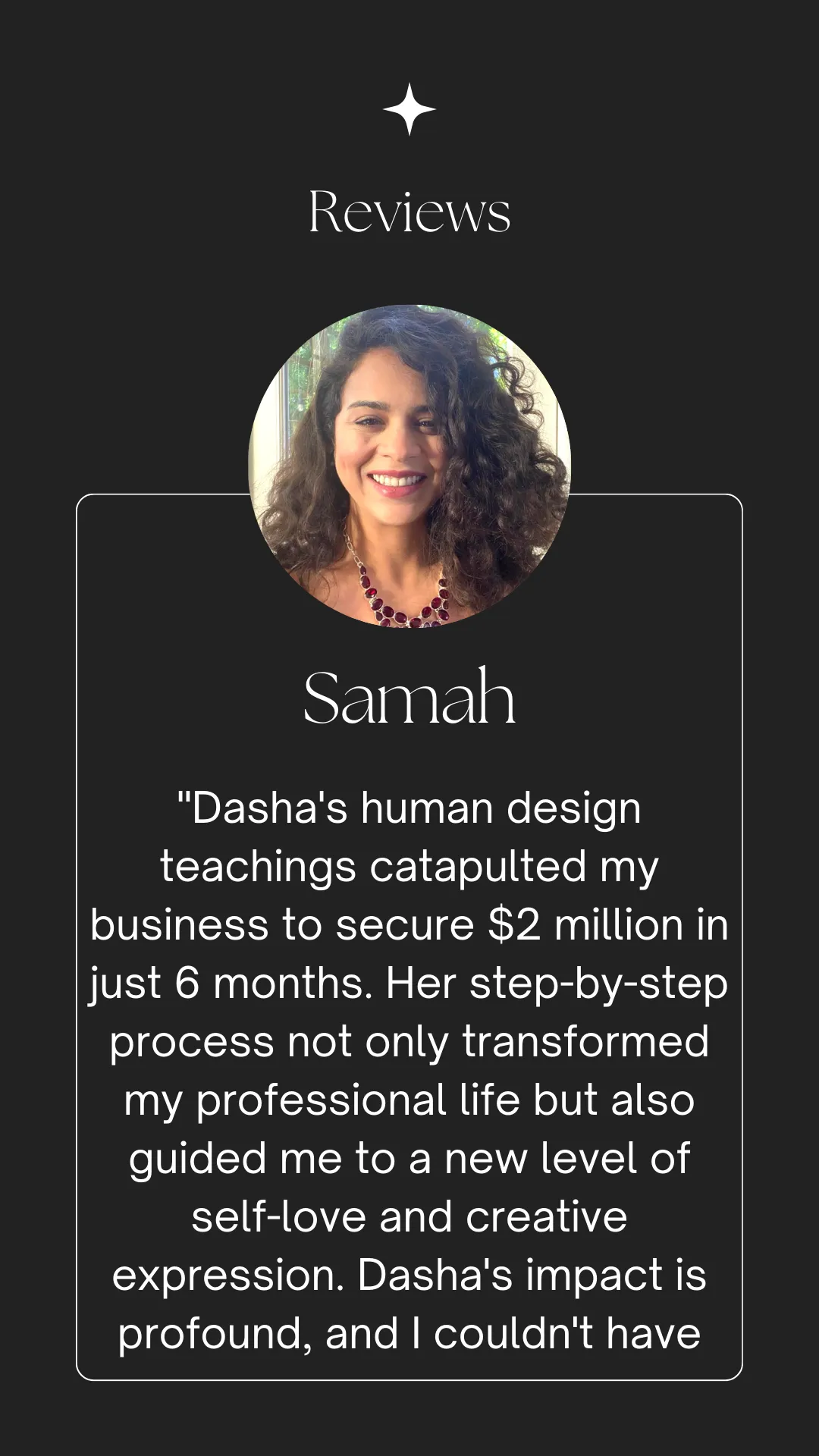
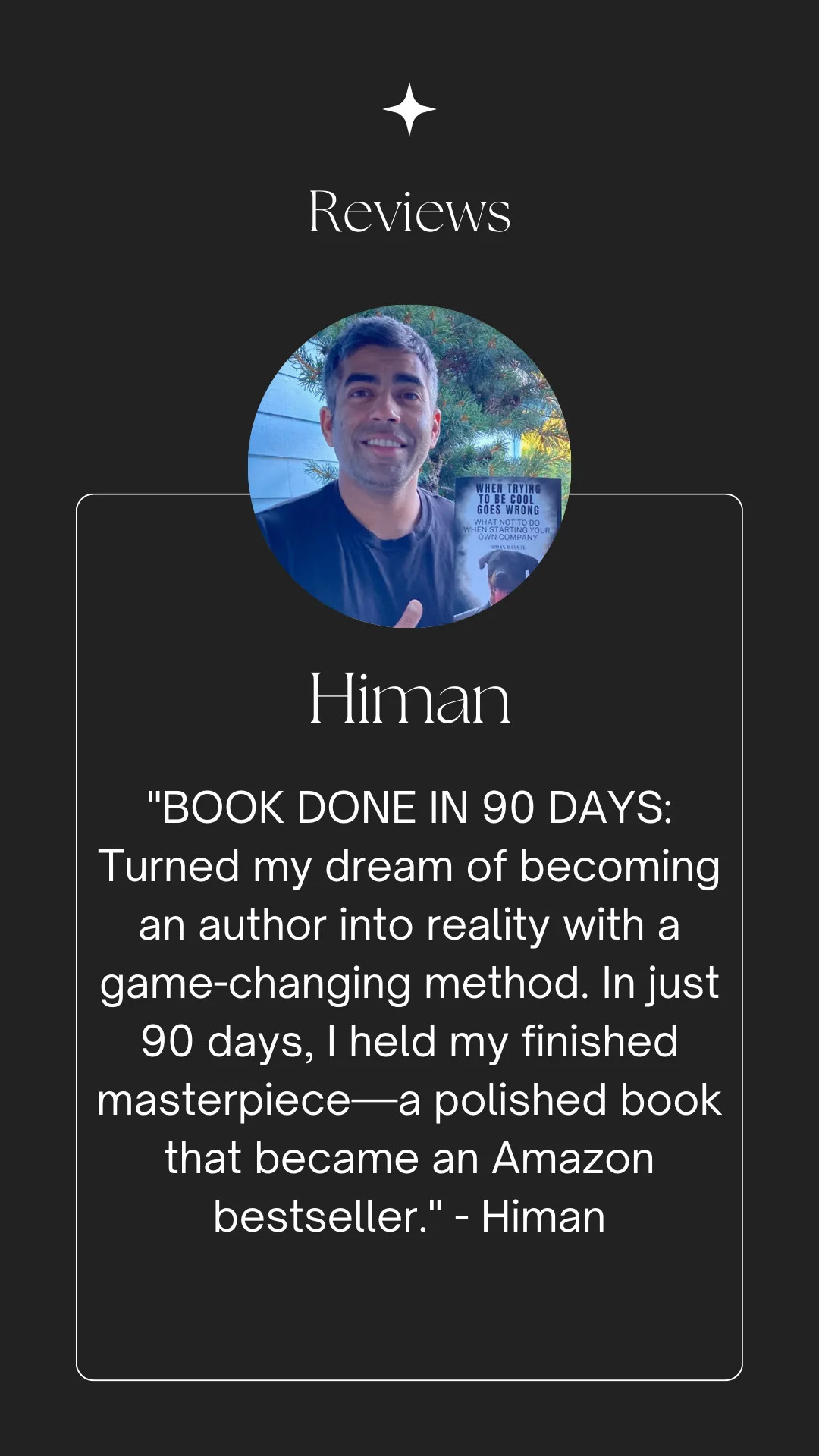

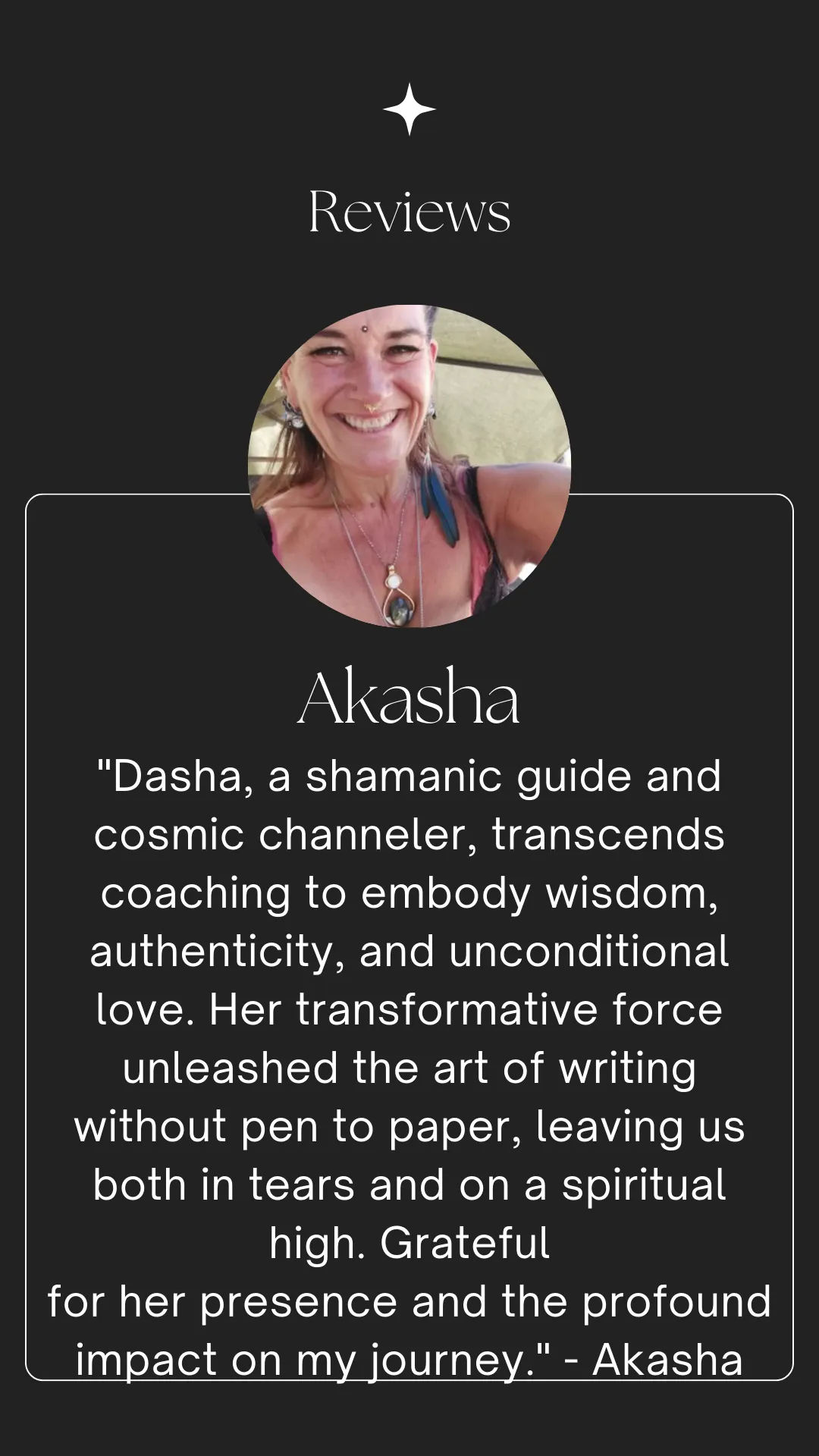
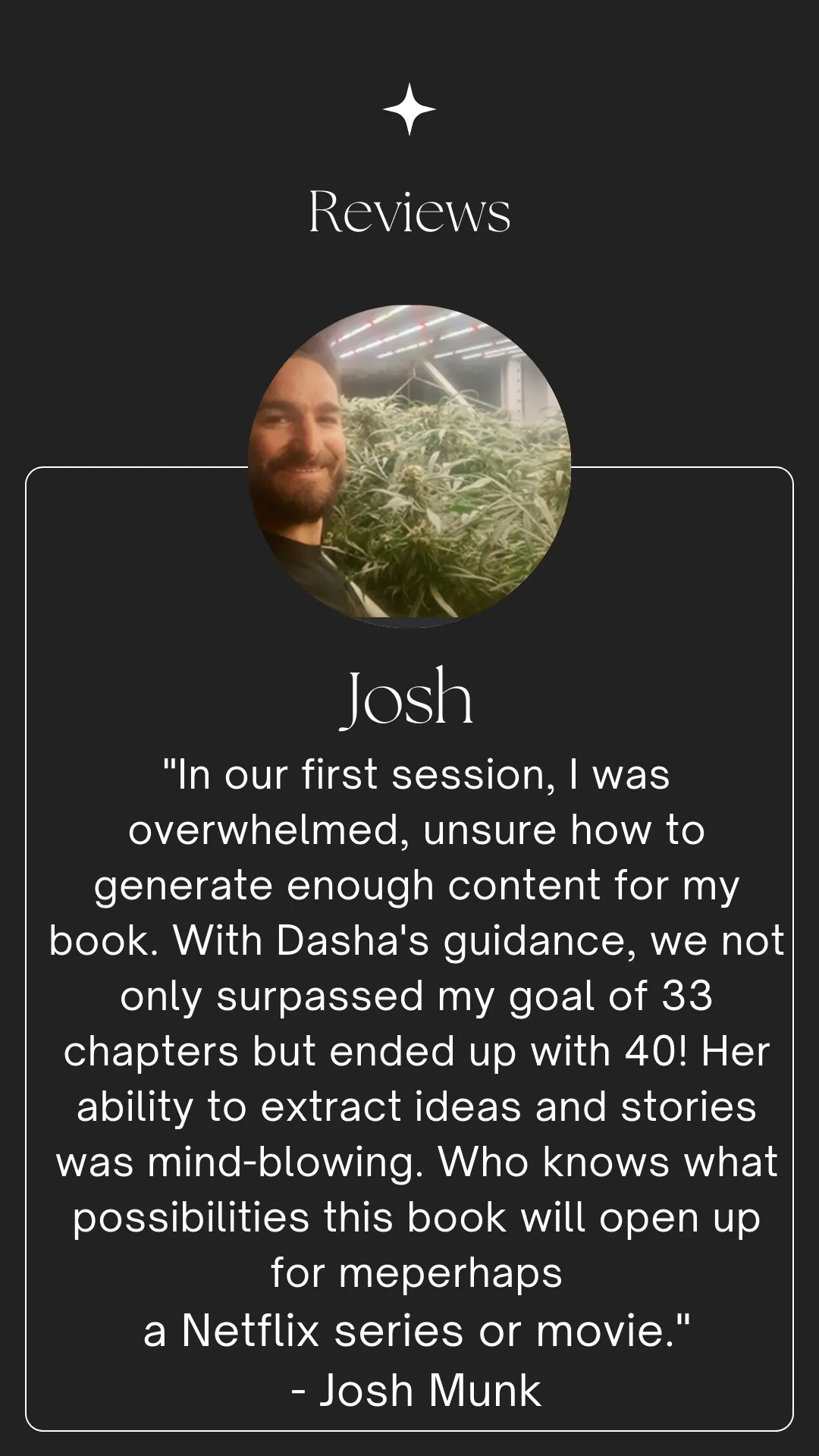
Refund Policy
All Publish & Play LLC™ products and services are non-refundable due to the extreme value of our content. Buy things you believe in and know in your GUT are right for you!
© 2023 Abundant Life Consulting LLC. All rights reserved. Terms & Conditions | Privacy Policy
Facebook
Instagram
Youtube